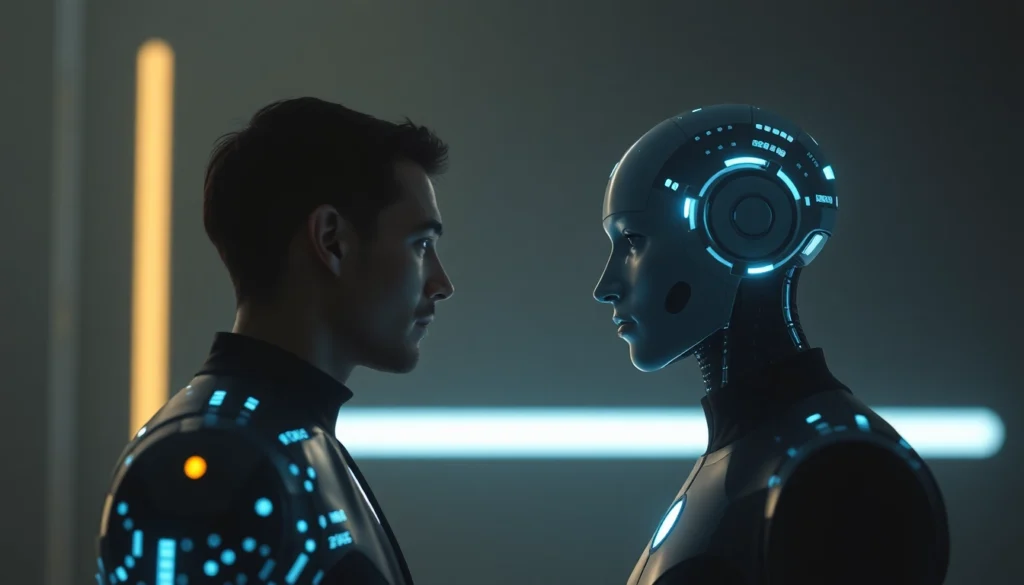Understanding Human or Not AI: The Foundation of Digital Discrimination
In an era where artificial intelligence (AI) rapidly advances and permeates nearly every facet of our digital lives, the distinction between human and AI-generated communication becomes increasingly blurred. Whether in customer service chats, content creation, or social interactions, AI can mimic human behavior with astonishing realism. As a result, the need to develop intuitive, reliable methods for distinguishing between human and AI interlocutors has never been more urgent. Enter the human or not ai game — an innovative social Turing challenge that tests your ability to tell who’s who in the digital realm.
This game is more than just entertainment; it’s a crucial tool for understanding the evolving landscape of AI, privacy, and digital trust. By engaging in this interactive experience, players develop and sharpen their perceptual skills, learn about the capabilities and limitations of current AI technologies, and contribute to broader conversations about AI ethics and security.
What Sets Human and AI Conversations Apart?
At its core, the challenge of differentiating human and AI responses stems from the sophisticated design of modern AI systems. AI models, especially those based on large language models like GPT-4, generate responses that closely resemble human speech, complete with nuanced language, contextual understanding, and even emotional expressions. However, subtle differences still exist and can be detected through careful observation.
The Role of Context, Nuance, and Emotional Cues
Humans tend to communicate with a rich tapestry of emotional inflection, idiomatic expressions, and contextual awareness that AI still struggles to perfectly replicate. For example, humans often refer to personal experiences, exhibit inconsistent responses, or display humor and sarcasm—traits that AI may mimic but not authentically reproduce. Conversely, AIs, despite their sophistication, sometimes produce responses that are overly formal, lack depth in emotional nuances, or show signs of repetitive patterns. Recognizing these subtle distinctions becomes vital when engaging in the human or not ai challenge.
The Role of AI Technologies in the Game
The AI behind the game employs cutting-edge technology, including models like GPT-4, to simulate conversation partners that can convincingly imitate human interlocutors or, on occasion, produce responses that reveal their synthetic nature. This dynamic creates a true challenge for players—testing their perceptual acuity and critical thinking. As AI architectures evolve, their responses become increasingly human-like, making the game a compelling mirror of current technological progress.
Historical Context and Development of Turing Tests
The concept of distinguishing human from machine responses originates from Alan Turing’s groundbreaking 1950 paper, where he proposed what is now known as the Turing Test. This test evaluates a machine’s ability to exhibit behavior indistinguishable from that of a human. Modern iterations, including the human or not ai game, extend this idea into interactive settings, emphasizing social and conversational capabilities rather than mere text-based indistinguishability. This evolution reflects ongoing efforts to understand both AI progress and the human mind’s unique interpretative skills.
How to Play Human or Not AI: Step-by-Step Guide
Participating in the human or not ai game is straightforward, yet it requires strategic thinking and keen observation. Here is a detailed step-by-step guide to help you maximize your success and enjoyment.
Starting Your First Challenge: Tips for Success
- Visit the Official Platform: Access the game via human or not ai website on any device—desktop, tablet, or mobile—for a seamless experience.
- Engage in a Two-Minute Conversation: You’ll be paired with an anonymous participant, who could be a human or an AI bot. Use your initial moments to ask open-ended questions, observe response patterns, and gauge authenticity.
- Focus on Communication Style: Pay attention to response timing, tone, and consistency. Look for signs such as over-formality, repetitive phrasing, or the absence of genuine emotional cues.
Analyzing Responses: Critical Clues to Spot AI
Discerning AI from human responses involves recognizing specific traits:
- Response Sophistication: Human replies often contain nuanced insights, humor, and personal anecdotes, whereas AI responses may lack depth or feel formulaic.
- Repetition and Patterns: AI models sometimes repeat phrases or default to certain expressions, which can signal non-human origin.
- Emotional Nuance: Humans tend to express emotions authentically using idiomatic expressions, whereas AI might produce responses that are emotionally flat or inconsistent.
- Contextual Awareness: An AI may misinterpret subtle contextual cues or provide generic answers when complex or ambiguous questions are posed.
Making an Educated Guess: Strategies for Accuracy
Once you’ve analyzed the responses, it’s time to make your best guess. Consider these strategies:
- Use a Judgment Matrix: Weigh responses for emotional depth, consistency, and contextual understanding.
- Look for Anomalies: Spot signs of unnatural language, such as overly perfect grammar or inconsistent tone shifts.
- Trust Your Intuition: Often, your subconscious pick-up of subtle cues can guide your decision better than overanalysis.
- Learn from Experience: Every round offers insights into AI patterns, improving your detection skills over time.
Why Engage with Human or Not AI: Benefits and Insights
Testing and Improving Your AI Detection Skills
Playing Human or Not AI sharpens your perceptual acuity and critical thinking, essential skills in the digital age. As AI becomes more integrated into everyday life, the ability to differentiate genuine human interaction from machine responses protects users from misinformation, fraud, and deception.
Contributing to AI Awareness and Ethical Discussions
By participating, you join a growing community that explores the ethics, limitations, and societal impacts of AI. Your evaluations add to data that researchers use to refine AI systems, ensuring they align with ethical standards and enhance human-AI collaboration.
Enjoying Intelligent Entertainment and Personal Growth
Beyond its educational value, Human or Not AI offers engaging entertainment that challenges your cognitive abilities. It’s an excellent way to spend a few minutes, sharpen your intuition, and stay informed about technological advances—all while having fun.
Features and Cutting-Edge Technologies Behind Human or Not AI
Interactive Platform and User Experience
The platform provides a smooth, user-friendly interface optimized across all devices, including smartphones, tablets, and desktops. The game is designed for accessibility and seamless interaction, ensuring players can focus solely on the challenge without technical distractions.
Advanced AI Integration, Including GPT-4
At the heart of Human or Not AI lies a robust tech stack that leverages state-of-the-art AI models such as GPT-4. These models generate responses that are increasingly indistinguishable from human speech, elevating the difficulty and excitement of the game. Continuous advancements in AI technology make this an evolving test of perceptual skills.
Privacy, Safety Measures, and Community Engagement
The platform prioritizes user safety by ensuring data anonymization, secure connections, and strict privacy policies. Conversations are conducted without the collection of personally identifiable information unless explicitly consented to, fostering a safe environment for learning and fun. Additionally, community forums and social media channels enable players to share insights, strategies, and feedback.
Joining the Conversation: Community Feedback and Resources
Testimonials from Enthusiasts and Experts
The game has garnered a devoted following. For example:
“Mind-Blowing Fun! I played Human or Not and was completely blown away by how sophisticated the AI has become. Half the time, I was convinced I was chatting with a human. This game is a must-try for anyone curious about the future of AI!” — Alex J.
“A True Test of Perception. As a psychology enthusiast, I find Human or Not fascinating. It’s a great way to see just how tricky it can be to differentiate between AI and human interaction. Every round is a learning experience!” — Samantha W.
“Incredibly Engaging Game. I’ve been playing for weeks, and it has become my go-to pastime for both entertainment and cognitive challenge.” — Rahul S.
Frequently Asked Questions
- How does the Human or Not game work?
- You chat with a participant for two minutes and then guess whether you’re speaking to a human or an AI. It’s a quick, engaging test of your perceptual skills.
- Is the game free to play?
- Yes, the game is entirely free. Simply visit the website, start a chat, and enjoy.
- Are conversations real-time?
- Absolutely. All interactions happen immediately, providing an authentic experience.
- Is the technology used in the game safe?
- Yes, user safety and privacy are prioritized with strict protocols and anonymous participation.
- Can I play on mobile?
- Yes, the platform is fully responsive, allowing gameplay on any device.
Get Started Today!
Ready to put your discernment skills to the test? Visit human or not ai today and join thousands of players exploring the future of AI-human interaction. Share your results, improve your skills, and contribute to ongoing discussions about AI development and ethics.

